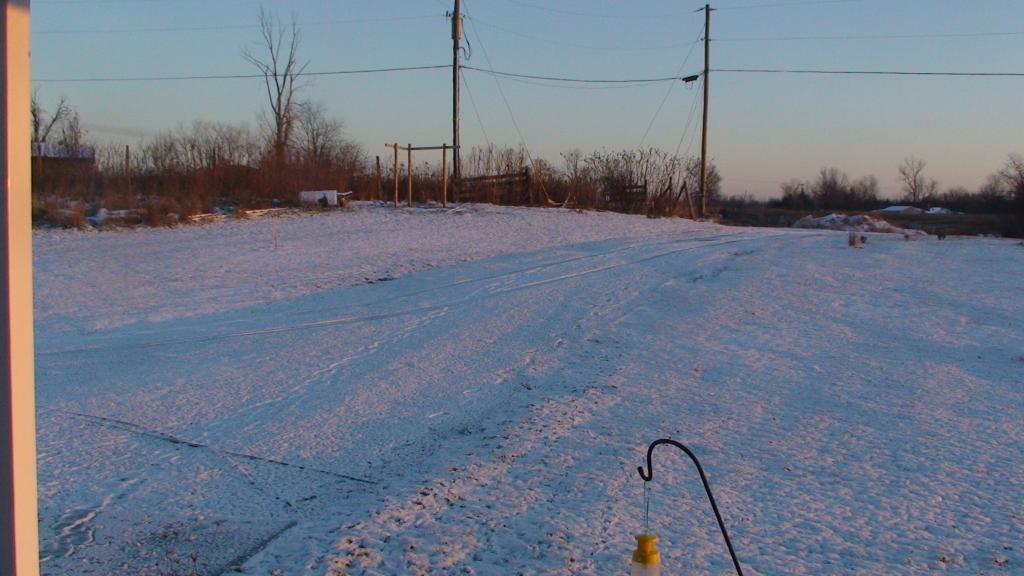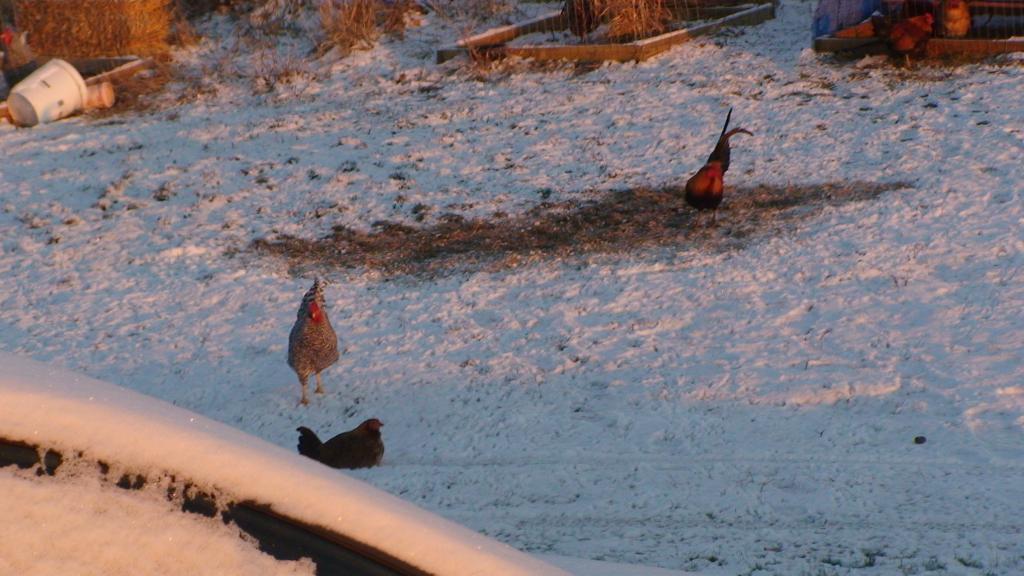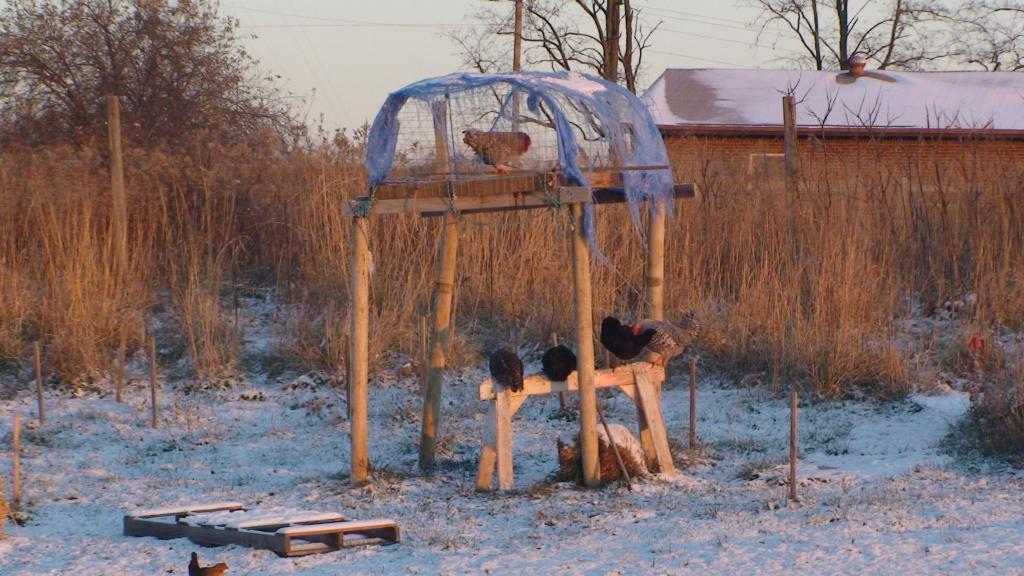STILL DISTINGUISHING FULL- AND HALF-SIBLINGS 6 MONTHS POST-HATCH
The front porch flock is now made up of eight birds. Six are F1 red jungle fowl x American game (4 cockerels and 2 pullets), one is an American game pullet (Tippy) and remainder is a red jungle fowl hen. Despite beng the largest and full American game, Tippy is the lowest ranking within the flock. The hybrids, male and female, drive her to periphery of feeding stations but get along just fine among themselves. As an experiment I released Sallie (Tippy's mom) so she could go to roost with balance of front porch flock. While Sallie was out and about Tippy was at top rank second only to Sallie and she went to roost next to her mother in the top spot. For last 45 days, Tippy spends much of her day loitering outside Sallie and Eduardo's pen so they still know each other. When I am out doing yard work Tippy breaks of from whatever group she is foraging with and follows me about. It appears impart for companionship. The smaller hybrid cockerels seem not to keep her attention.









